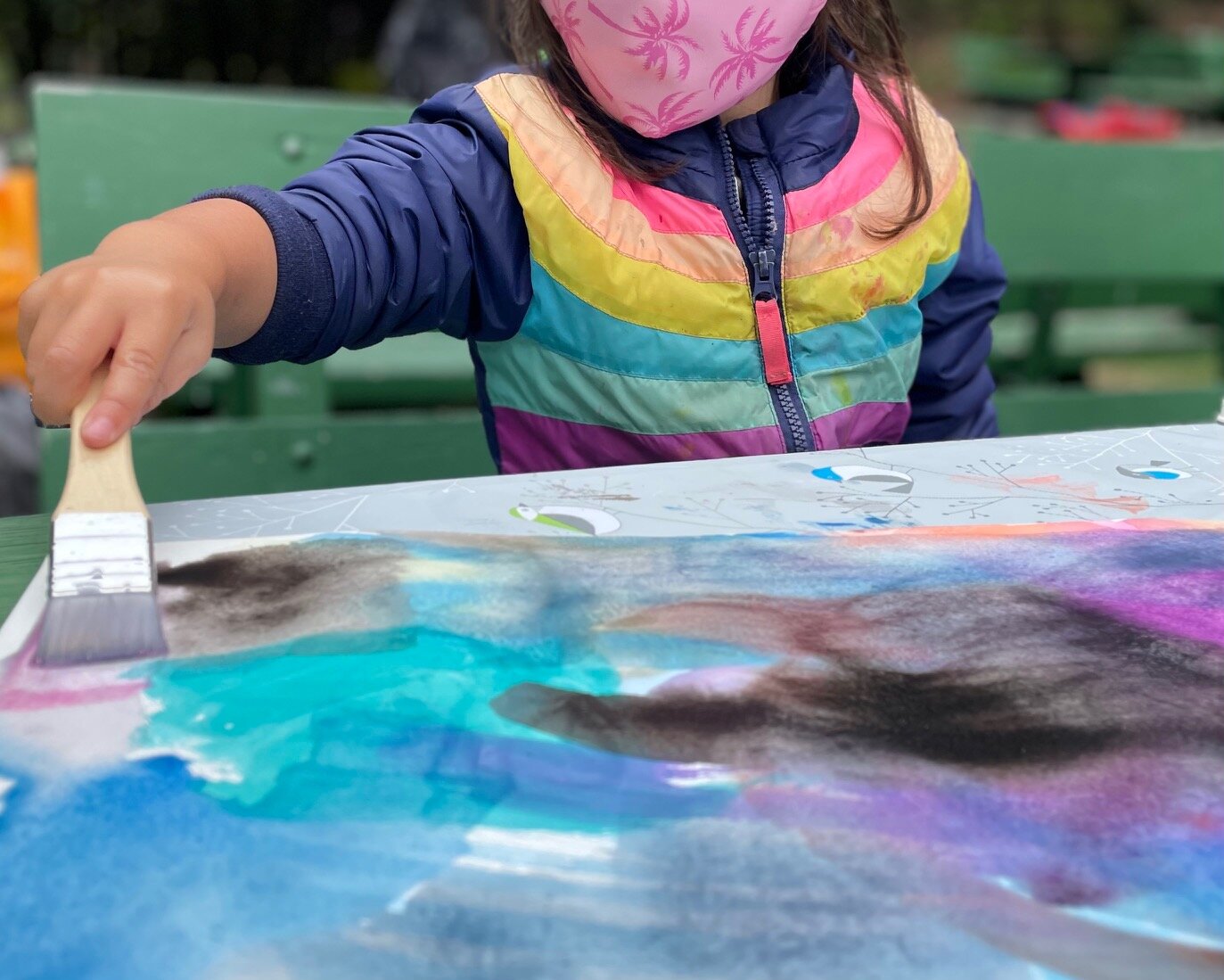
What Reggio Inspires?
“There are three teachers of children: adults, other children, and their physical environment.”
As Reggio-Emilia so beautifully acknowledges the environment as the third teacher, we value nature as our third teacher. Our curriculum is informed by both nature and the interests that emerge in our outdoor space. The children are able to develop a love for the environment and make connections with the natural world each day. These connections spark the children to think about their world and how to care for it.
Our day is structured so children have large amounts of time to play in nature. In the beginning of the year we focus on getting to know the children and learning who they are and their interests. We observe their play so we can see what common interests and ideas are emerging in the group. Are the children gravitating toward sensory play and cooking in the mud kitchen? Are they pretending to be dragons and engaging in dramatic play, or maybe they are more interested in building forts or searching for worms and banana slugs? Whatever topics emerge we support and encourage the children to dig deeper and extend their learning. The learning that occurs is a beautiful give and take between the adults and the children and hopefully inspiring them to collaborate with each other, ask questions and develop a love of learning.
The guiding principles of the Reggio-Emilia Approach inform our teaching and the ways we support and encourage children to be citizens of the world. This educational approach values childhood and respects children by fostering their active role in learning and exploring their world.
Some Guiding Principles from the Reggio Approach that help guide our approach
Image of the Child- “the cornerstone of Reggio Emilia experiences conceptualizes an image of the child as competent, strong, inventive, and full of ideas with rights instead of needs”.
The Environment as the third teacher- Our outdoor classroom provides a beautiful learning environment
Relationships- Children work together and share their knowledge and ideas through play with others in the environment.
Collaboration- Learning is social, by working together- teachers and children, children and children, children and parents, teachers and parents and anyone in the larger community strengthens a love of learning.
*Progettazione- “Italian word means making flexible plans for the further investigation of ideas and devising the means for carrying them out in collaboration with the children, parents, and at times, the larger community.”
Provocation- Our play invitations help children to learn, explore and gather more information on topics of interest. Sometimes the ideas are inspired from their ideas and sometimes they are developed with other children or offered from a teacher.
One Hundred Languages of Children- Children learn using many different media to represent their ideas. Children are encouraged to use many different materials to express their ideas. The founder of the Reggio-Emilia approach, Loris Malaguzzi saw children as having 100 languages to express themselves. We often use art as an expression, but there are many ways children express themselves.
*Excerpted from Authentic Childhood:Exploring Reggio Emilia in the Classroom by Susan Fraser and Carol Gestwicki
